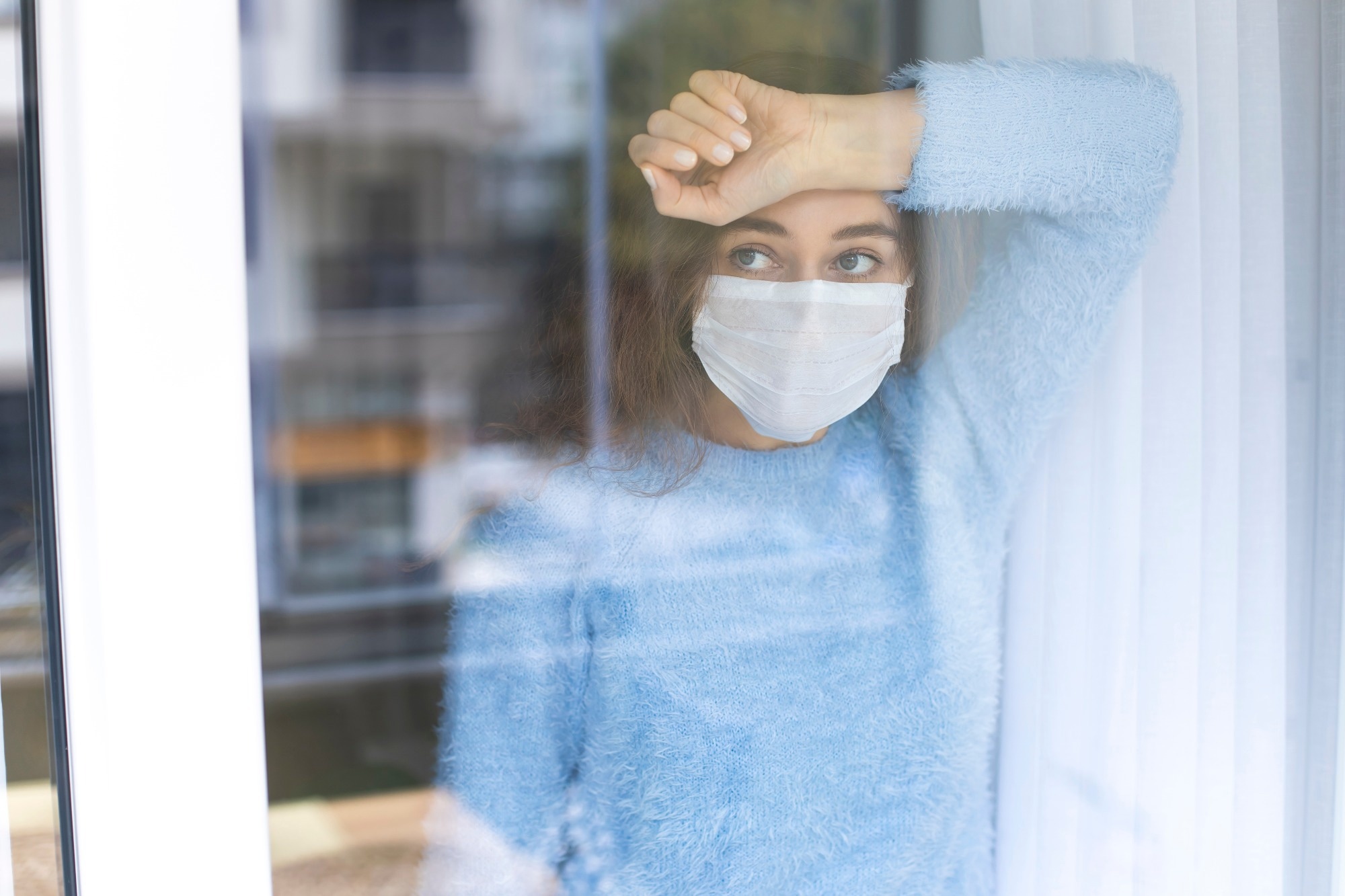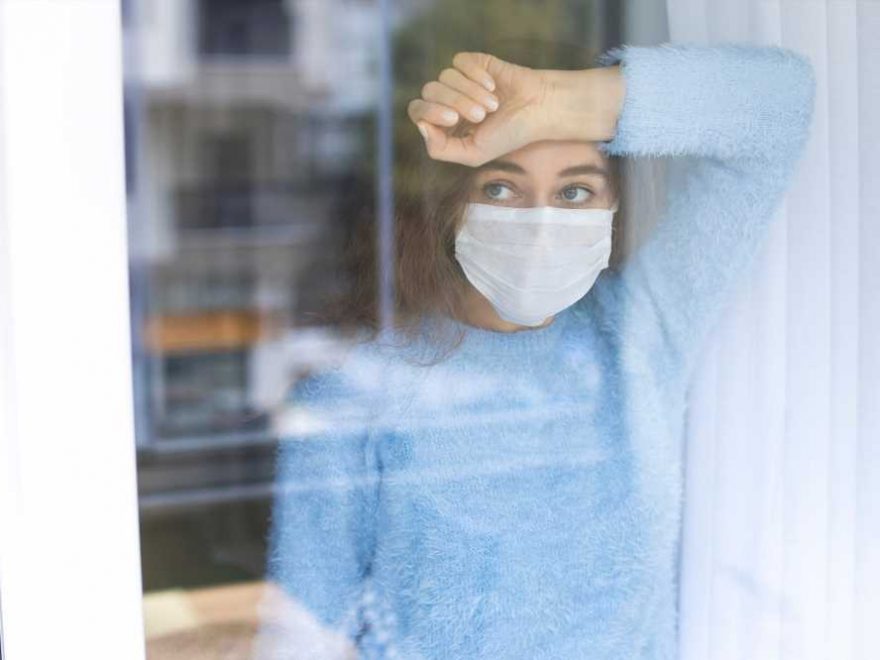In a recent study published in Nature Medicine, researchers reviewed the direct and indirect effects of coronavirus disease 2019 (COVID-19) and the COVID-19-induced pandemic on mental health.

Background
COVID-19 indirect effects encompassed stress-evoking and disruptive societal changes that adversely affected the general population's mental well-being. COVID-19 also triggered many direct effects, such as acute and long-lasting neuropsychiatric sequelae that occurred during primary infection or three to four weeks later and persisted for 12 weeks or more in some cases after initial infection.
About the study
In the present study, researchers first summarized empirical findings on how the COVID-19 pandemic impacted mental health at the population level by skimming through mental health symptom reports and prevalent mental disorders and suicide rates. Next, they described mental health sequelae of COVID-19 (e.g., symptoms of cognitive impairment and fatigue). Furthermore, they reviewed the neurobiological impact on brain structure and function. Finally, the researchers addressed the knowledge gaps and discussed the lessons learned to propose the best strategies to manage and mitigate mental health issues in future crises.
Study findings
The majority of the general population demonstrated remarkable resilience and adaptation, as the researchers observed a slight increase in mental health symptom levels in the overall population. However, they found alternative explanations for the same; for instance, community support activities might have mitigated the mental health burden. Drug overdose or homicide likely masked the incidence of mental disorders. Due to a lag-time effect, some social/financial consequences of the COVID-19 pandemic might have surfaced later.
Further, the studies evidenced that women consistently reported more mental health problems than men. They underwent higher stress due to increased childcare chores, domestic violence, and economic difficulties due to employment disruptions. Adolescents and young adults were inexplicably affected too. Alarmingly, studies in China and Japan indicated marked increases in suicide rates in children and adolescents during school closure periods. Black, Hispanic, and Asian individuals demonstrated higher unmet mental healthcare needs during the COVID-19 pandemic in the United States (US). Likewise, people with multiple comorbidities represented another vulnerable group on which the COVID-19 pandemic had an adverse impact. Perhaps, they perceived more stress and fear of infection due to disruptions of regular healthcare services.
A meta-analysis of nearly 206 studies found that the mental well-being of healthcare workers (HCWs) was comparable to the general population. However, this analysis did not account for different conditions faced by frontline and non-frontline HCWs. Nevertheless, HCWs had an increased workload during the pandemic, accompanied by fear of infecting themselves and their families. Several reports documented a higher incidence of depression and anxiety in HCWs.
Even before the COVID-19 pandemic, most countries had disorganized and understaffed mental health systems. To add to their plight, in the first 18 months of the pandemic, doctors abridged or postponed appointments and acute inpatient hospitalizations.
The broader neuropsychiatric impact was heterogeneous and depended on infection severity. Several asymptomatic COVID-19 cases had no neuropsychiatric symptoms. However, others had transient non-serious neuropsychiatric symptoms. For instance, a meta-analysis that assessed patients 12 weeks after confirmed severe acute respiratory syndrome coronavirus 2 (SARS-CoV-2) diagnosis found that 32% suffered from fatigue, and 22% experienced cognitive impairment. Unfortunately, these studies did not have well-matched controls with other types of respiratory infections or inflammatory conditions.
During COVID-19-related hospitalization, the most common neuropsychiatric outcome was delirium, which occurred among one-third of patients and over 50% of patients who required intensive care unit (ICU) admission. In another one-year follow-up study using the US Veterans Affairs database, the incident risk difference due to COVID-19-triggered mental disorders was 64 per 1,000 individuals.
A study analyzed electronic health records of the TriNetX network in the US, with 236,379 COVID-19 survivors and found that risks of incident neurological diagnoses were correlated with disease severity and increased by 78% and 32% when compared to influenza and other respiratory tract infections, respectively. Yet, whether post-acute sequelae of SARS-COV-2 infection form a unique pattern remains debatable.
Studies have found acute neuropsychiatric symptoms among patients with severe COVID-19 correlated with the level of serum inflammatory markers. Neuroimaging deciphered leukoencephalopathy, acute disseminated encephalomyelitis, and cytotoxic lesions in the corpus callosum. Studies of postmortem specimens revealed significant neuropathology with signs of hypoxic damage and neuroinflammation. Post-acute neuroimaging studies in SARS-CoV-2-recovered patients, compared to control patients without COVID-19, showed numerous alterations in brain structure. For instance, such patients had a minor reduction in gray matter thickness in the brain cortex and within the corpus callosum and reduced overall brain size.
All these findings align with the detection of anosmia, tremors, affect problems, and cognitive impairment issues in COVID-19 patients. Yet, neurobiological mechanisms of SARS-CoV-2-mediated neuropsychiatric sequelae remain unclear. It is also unclear whether COVID-19-related hospitalizations cause brain abnormalities due to hypoxia or whether it is a direct effect of SARS-CoV-2 infection.
Learnings and future perspective
First and foremost, mental health is as important as physical health and requires attention. There should be provisions for early interventions for those at the highest risk, including those vulnerable due to low socioeconomic status. Thus, adolescents and young adults, women, people with poor physical health and early life trauma, or those with higher exposure to pandemic-related work changes (e.g., HCWs) should be given priority for such interventions.
Another key takeaway was that media communication during crises should give concrete and actionable advice to avoid polarization and strengthen vigilance. Further, it should foster resilience and help prevent a surge in mental health problems. Most importantly, longer follow-up periods on how a pandemic impacts a population's mental health is essential. There is an urgent need to prepare research and healthcare infrastructures for monitoring the long-term mental health effects of the COVID-19 pandemic and future crises. Overall, collaborative and interdisciplinary efforts with well-controlled prospective studies using standardized instruments will be crucial.
- Penninx, B.W.J.H., Benros, M.E., Klein, R.S. et al. (2022). How COVID-19 shaped mental health: from infection to pandemic effects. Nature Medicine. doi: https://doi.org/10.1038/s41591-022-02028-2 https://www.nature.com/articles/s41591-022-02028-2
Posted in: Medical Science News | Medical Research News | Disease/Infection News
Tags: Acute Disseminated Encephalomyelitis, Adolescents, Anosmia, Anxiety, Brain, Children, Coronavirus, Coronavirus Disease COVID-19, Cortex, covid-19, Delirium, Depression, Encephalomyelitis, Fatigue, Health Systems, Healthcare, Hypoxia, Influenza, Intensive Care, Medicine, Mental Health, Neuroimaging, Overdose, Pandemic, Research, Respiratory, Respiratory Tract Infections, SARS, SARS-CoV-2, Severe Acute Respiratory, Severe Acute Respiratory Syndrome, Stress, Syndrome, Trauma, Veterans Affairs

Written by
Neha Mathur
Neha is a digital marketing professional based in Gurugram, India. She has a Master’s degree from the University of Rajasthan with a specialization in Biotechnology in 2008. She has experience in pre-clinical research as part of her research project in The Department of Toxicology at the prestigious Central Drug Research Institute (CDRI), Lucknow, India. She also holds a certification in C++ programming.
Source: Read Full Article
